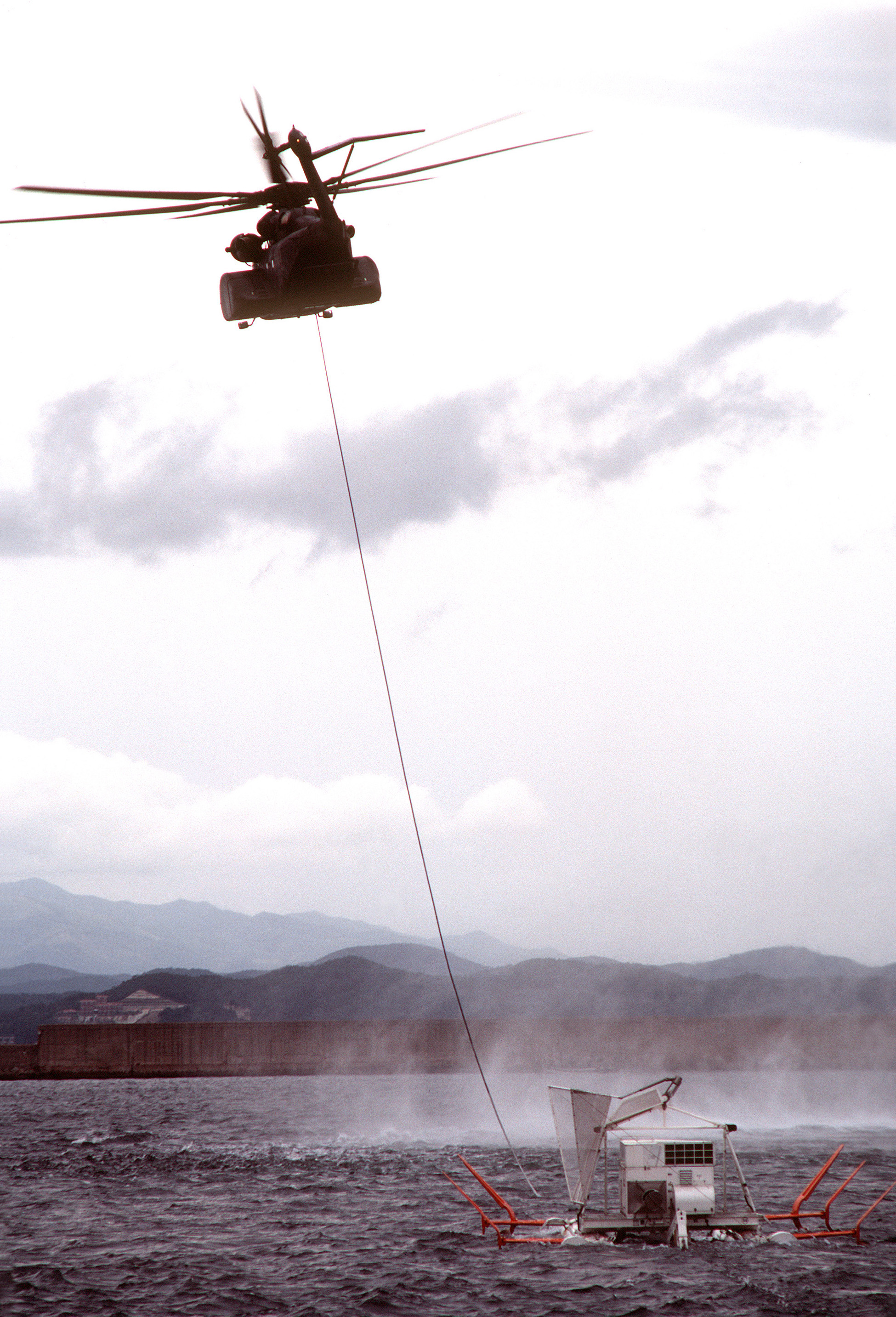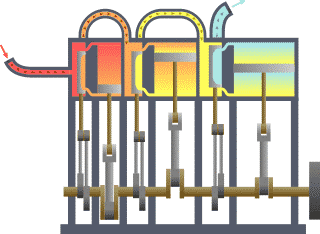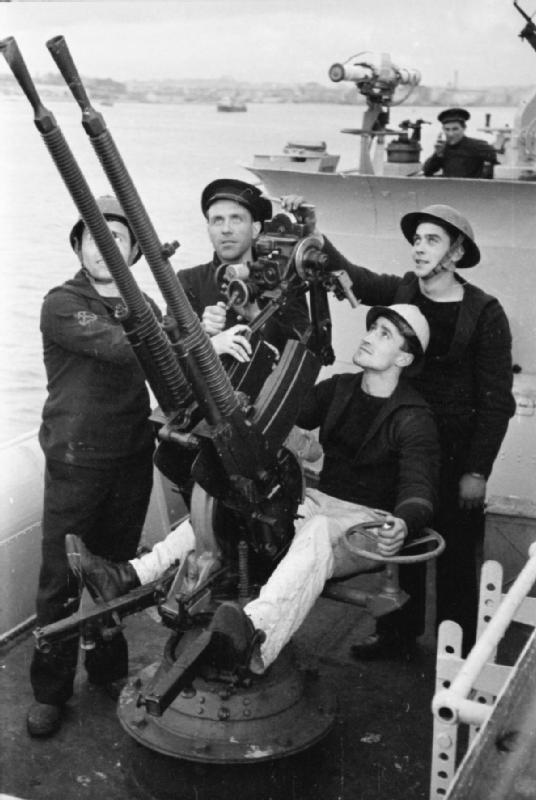|
No.1-class Submarine Chaser (1943)
The was a class of auxiliary submarine chasers of the Imperial Japanese Navy (IJN), serving during World War II. 200 vessels were built under the Maru Kyū Programme (Ship # 500–599) and the Maru Sen Programme (Ship # 2001–2100). Background In 1939 the Imperial Japanese Navy had two diesel-engined harbour tugs built, ''No.1182'' and ''No.1183''. (Other contemporary Japanese harbour tugs were powered by compound steam engines). They had wooden hulls and were designed so that they could be converted to fishing boats after hostilities ended.Jentschura ''et al'' 1977, p. 217. The two tugs, which were completed in 1940,Jentschura ''et al'' 1977, p. 267 formed the basis for a class of auxiliary subchasers. The IJN evaluated them, confirmed that they were effective subchasers, and in 1941, ordered 100 vessels. Their wartime performance was good, but they were always troubled by insect damage because their hull was wooden. Those that survived the war played an active part in the ... [...More Info...] [...Related Items...] OR: [Wikipedia] [Google] [Baidu] |
Kure Naval Arsenal
was one of four principal naval shipyards owned and operated by the Imperial Japanese Navy. History The Kure Naval District was established at Kure, Hiroshima in 1889, as the second of the naval districts responsible for the defense of the Japanese home islands. Along with the establishment of the navy base, a ship repair facility was also constructed, initially by moving the equipment from the Onohama shipyards near Kobe. Construction was supervised by the French engineer Louis-Émile Bertin. The first warship constructed at Kure, '' Miyako'', was launched in 1897. The "Kure Shipyards" were officially renamed the "Kure Naval Arsenal" in 1903. Kure developed into one of the largest shipbuilding facilities in the Empire of Japan, capable of working with the largest vessels. The Arsenal included a major steel works (built with British assistance), and also facilities for producing naval artillery and projectiles. The battleships ''Yamato'' and '' Nagato'' were designed and ... [...More Info...] [...Related Items...] OR: [Wikipedia] [Google] [Baidu] |
Naval Ensign Of The People's Republic Of China
A navy, naval force, military maritime fleet, war navy, or maritime force is the military branch, branch of a nation's armed forces principally designated for naval warfare, naval and amphibious warfare; namely, lake-borne, riverine, littoral zone, littoral, or ocean-borne combat operations and related functions. It includes anything conducted by surface Naval ship, ships, amphibious warfare, amphibious ships, submarines, and seaborne naval aviation, aviation, as well as ancillary support, communications, training, and other fields. The strategic offensive role of a navy is Power projection, projection of force into areas beyond a country's shores (for example, to protect Sea lane, sea-lanes, deter or confront piracy, ferry troops, or attack other navies, ports, or shore installations). The strategic defensive purpose of a navy is to frustrate seaborne projection-of-force by enemies. The strategic task of a navy also may incorporate nuclear deterrence by use of submarine-launche ... [...More Info...] [...Related Items...] OR: [Wikipedia] [Google] [Baidu] |
HMS Tally-Ho (P317)
HMS ''Tally-Ho'' was a British submarine of the third group of the T class. She was built as ''P317'' by Vickers Armstrong, Barrow and launched on 23 December 1942. She has been the only ship of the Royal Navy to bear the name, that of the hunting call, "Tally-Ho!". Second World War service While commanded by Captain Leslie W. A. Bennington, ''Tally-Ho'' served in the Far East for much of her wartime career, where she sank thirteen small Japanese sailing vessels, a Japanese coaster, the Japanese water carrier ''Kisogawa Maru'', the Japanese army cargo ships ''Ryuko'' and ''Daigen Maru No.6'', the Japanese auxiliary submarine chaser '' Cha 2'', and the Japanese auxiliary minelayer ''Ma 4''. She also damaged a small Japanese motor vessel, and laid mines, one of which damaged the Japanese merchant tanker ''Nichiyoku Maru''. On 11 January 1944, ''Tally-Ho'', then based out of Trincomalee, Ceylon spotted the Japanese light cruiser and destroyer on anti-submarine warfare ex ... [...More Info...] [...Related Items...] OR: [Wikipedia] [Google] [Baidu] |
Japanese Auxiliary Submarine Chaser No
Japanese may refer to: * Something from or related to Japan, an island country in East Asia * Japanese language, spoken mainly in Japan * Japanese people, the ethnic group that identifies with Japan through ancestry or culture ** Japanese diaspora, Japanese emigrants and their descendants around the world * Japanese citizens, nationals of Japan under Japanese nationality law ** Foreign-born Japanese, naturalized citizens of Japan * Japanese writing system, consisting of kanji and kana * Japanese cuisine, the food and food culture of Japan See also * List of Japanese people * * Japonica (other) * Japanese studies , sometimes known as Japanology in Europe, is a sub-field of area studies or East Asian studies involved in social sciences and humanities research on Japan. It incorporates fields such as the study of Japanese language, history, culture, litera ... {{disambiguation Language and nationality disambiguation pages ... [...More Info...] [...Related Items...] OR: [Wikipedia] [Google] [Baidu] |
Minesweeping
Minesweeping is the practice of removing explosive naval mines, usually by a specially designed ship called a minesweeper using various measures to either capture or detonate the mines, but sometimes also with an aircraft made for that purpose. Minesweeping has been practiced since the advent of naval mining in 1855 during the Crimean War. The first minesweepers date to that war and consisted of British rowboats trailing Grappling hook, grapnels to snag the mines. By ship A sweep is either a contact sweep, a wire dragged through the water by one or two ships to cut the mooring wire of floating mines, or a distance sweep that mimics a ship to detonate the mines. The sweeps are dragged by minesweeper (ship), minesweepers, either purpose-built military ships or converted Commercial trawler, trawlers. Each run covers between , and the ships must move slowly in a straight line, making them vulnerable to enemy fire. This was exploited by the Turkish army in the Battle of Gallipoli i ... [...More Info...] [...Related Items...] OR: [Wikipedia] [Google] [Baidu] |
Compound Steam Engine
A compound steam engine unit is a type of steam engine where steam is expanded in two or more stages. A typical arrangement for a compound engine is that the steam is first expanded in a high-pressure (HP) cylinder, then having given up heat and losing pressure, it exhausts directly into one or more larger-volume low-pressure (LP) cylinders. Multiple-expansion engines employ additional cylinders, of progressively lower pressure, to extract further energy from the steam. Invented in 1781, this technique was first employed on a Cornish beam engine in 1804. Around 1850, compound engines were first introduced into Lancashire textile mills. Compound systems There are many compound systems and configurations, but there are two basic types, according to how HP and LP piston strokes are phased and hence whether the HP exhaust is able to pass directly from HP to LP ( Woolf compounds) or whether pressure fluctuation necessitates an intermediate "buffer" space in the form of a steam c ... [...More Info...] [...Related Items...] OR: [Wikipedia] [Google] [Baidu] |
Wartime Naval Armaments Supplement Programme (Japan, 1944)
The was the 1943-44 War Programme to fund further wartime armaments expansion plans of the Imperial Japanese Navy (IJN). Background Due to shifting wartime circumstances, the IJN focused on the construction of auxiliary and escort ships. As a result, the Wartime Naval Armaments Supplement Programme lacked any major warships capable of offensive operations. Table of vessels funded under 1944-45 Estimates {, class="wikitable" width="90%" , width="12%" , Category , width="8%" , Class , width="8%" , Vessel number(s) , width="20%" , Completed , width="15%" , Converted , width="12%" , Cancelled , - , Military transporter 2nd class , '' No.101'' , #1501–1569 and 32 vessels , '' No.101'' and 68 vessels , 22 vessels were transferred to the Army An army, ground force or land force is an armed force that fights primarily on land. In the broadest sense, it is the land-based military branch, service branch or armed service of a nation or country. It may also inc ... [...More Info...] [...Related Items...] OR: [Wikipedia] [Google] [Baidu] |
Rapid Naval Armaments Supplement Programme (Japan, 1941)
The was one of the armaments expansion plan of the Imperial Japanese Navy (IJN). Background In August 1941, the IJN started building warships for war. It extended to 293 vessels, 300,000 tons. Table of vessels See also *1st Naval Armaments Supplement Programme (Maru 1 Keikaku, 1931) * 2nd Naval Armaments Supplement Programme (Maru 2 Keikaku, 1934) *3rd Naval Armaments Supplement Programme (Maru 3 Keikaku, 1937) * 4th Naval Armaments Supplement Programme (Maru 4 Keikaku, 1939) *Temporal Naval Armaments Supplement Programme The is one of the armaments expansion plan of the Imperial Japanese Navy (IJN). Background In October 1940, the IJN schemed building of the submarines and auxiliary vessels because there was a shortage of them. Table of vessels See also *1st Na ... (Maru Rin Keikaku, 1940) *Additional Naval Armaments Supplement Programme (Maru Tui Keikaku, 1941) *5th Naval Armaments Supplement Programme (Maru 5 Keikaku, 1941) *6th Naval Armaments Supplement Programme (Maru ... [...More Info...] [...Related Items...] OR: [Wikipedia] [Google] [Baidu] |
World War II
World War II or the Second World War (1 September 1939 – 2 September 1945) was a World war, global conflict between two coalitions: the Allies of World War II, Allies and the Axis powers. World War II by country, Nearly all of the world's countries participated, with many nations mobilising all resources in pursuit of total war. Tanks in World War II, Tanks and Air warfare of World War II, aircraft played major roles, enabling the strategic bombing of cities and delivery of the Atomic bombings of Hiroshima and Nagasaki, first and only nuclear weapons ever used in war. World War II is the List of wars by death toll, deadliest conflict in history, causing World War II casualties, the death of 70 to 85 million people, more than half of whom were civilians. Millions died in genocides, including the Holocaust, and by massacres, starvation, and disease. After the Allied victory, Allied-occupied Germany, Germany, Allied-occupied Austria, Austria, Occupation of Japan, Japan, a ... [...More Info...] [...Related Items...] OR: [Wikipedia] [Google] [Baidu] |
Submarine Chaser
A submarine chaser or subchaser is a type of small naval vessel that is specifically intended for anti-submarine warfare. They encompass designs that are now largely obsolete, but which played an important role in the wars of the first half of the 20th century. Many of the American submarine chasers used in World War I found their way to Allies (World War II), Allied nations by way of Lend-Lease in World War II. Submarine chaser variants U.S. Navy submarine chasers were designed specifically to destroy German Empire, German submarines in World War I, and Empire of Japan, Japanese and Nazi Germany, German submarines in World War II. The small SC-1-class submarine chasers of the design used in World War I carried the hull designator SC (for Submarine Chaser). Their main weapon was the depth charge. They also carried machine guns and anti-aircraft guns. The similar-sized SC-497-class submarine chaser, SC-497-class was built for World War II. Also in World War II, larger PC-461-cla ... [...More Info...] [...Related Items...] OR: [Wikipedia] [Google] [Baidu] |
Hotchkiss M1929 Machine Gun
The Hotchkiss 13.2 mm machine gun (), also known as the Hotchkiss M1929 machine gun (''Mle 1929'', ''Mle 1930'', etc.), was a heavy machine gun, primarily intended for anti-aircraft use, designed and manufactured by French arms manufacturer Hotchkiss et Cie from the late 1920s until World War II, which saw service with various nations' forces, including Italy and Japan where the gun was built under license. Development In the 1920s, Hotchkiss developed a range of anti-aircraft automatic weapons in the 13.2, 25 and 37 mm calibers. They were all based on the same type of gas-operated action, similar to the one used in the 8 mm Hotchkiss Mle 1914 machine gun, which had proven extremely reliable during World War I and was still in service. The 13.2 mm machine gun project was started in 1922 as an aircraft machine gun, but the French government classified the belt-fed version (while not funding its further development), and only the magazine version (only usef ... [...More Info...] [...Related Items...] OR: [Wikipedia] [Google] [Baidu] |




